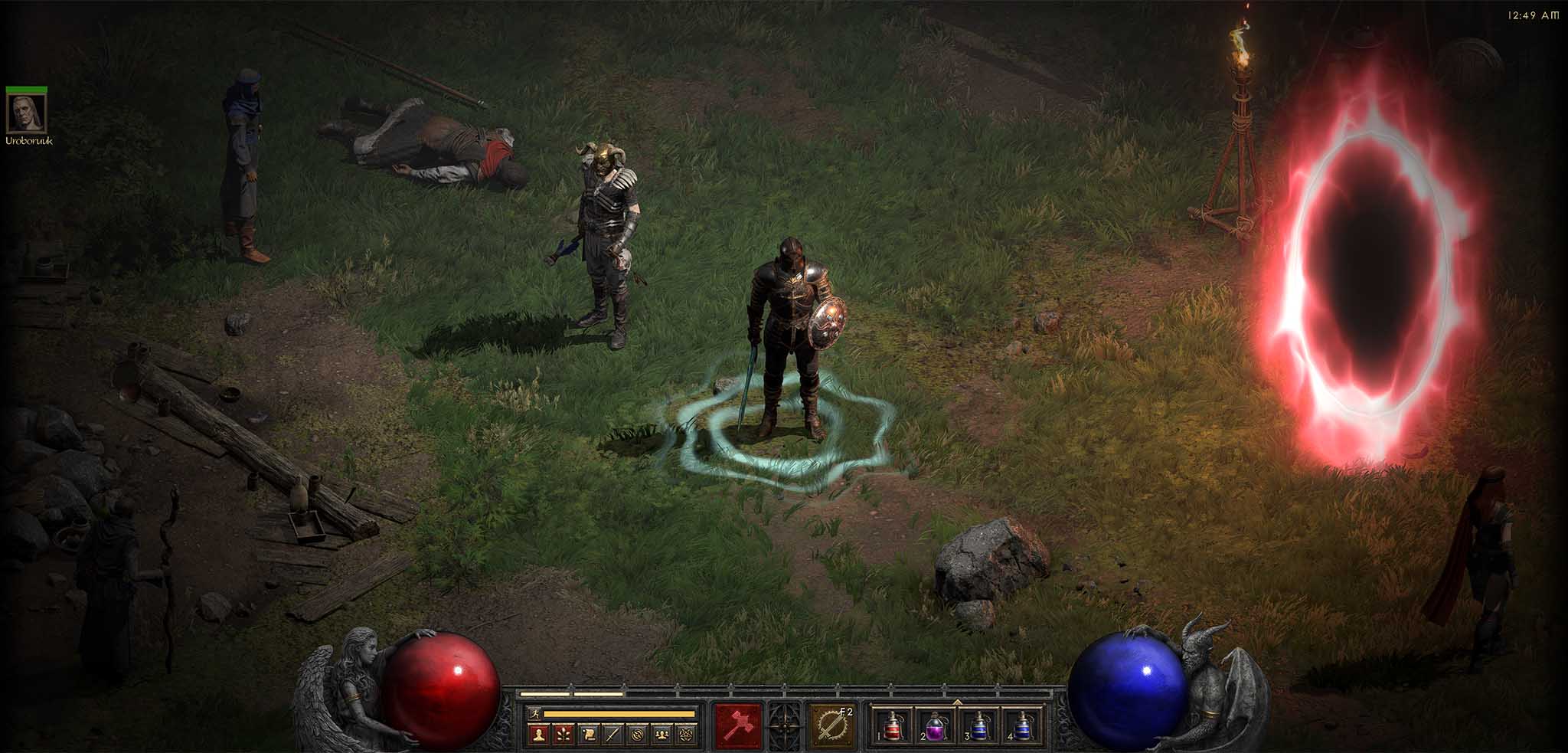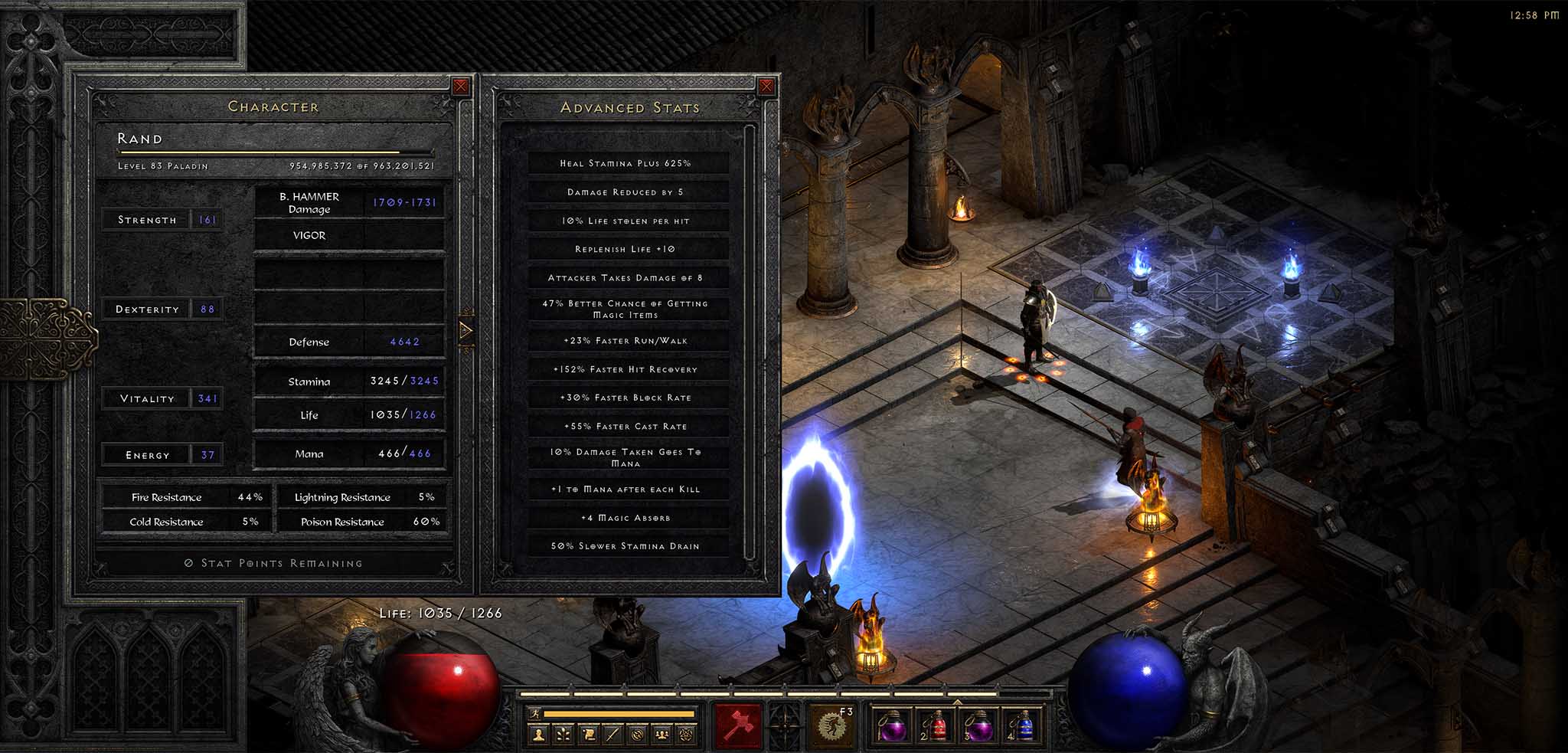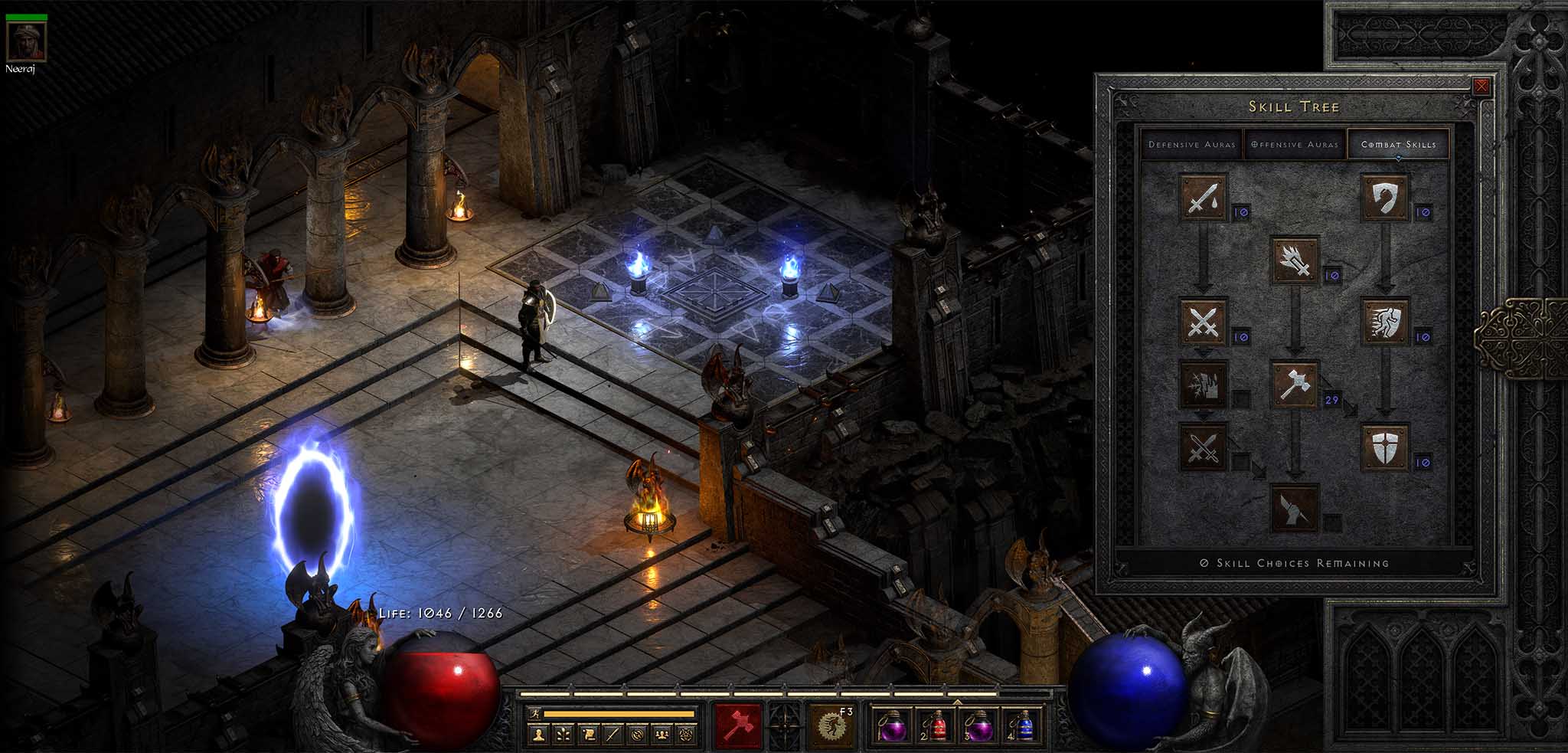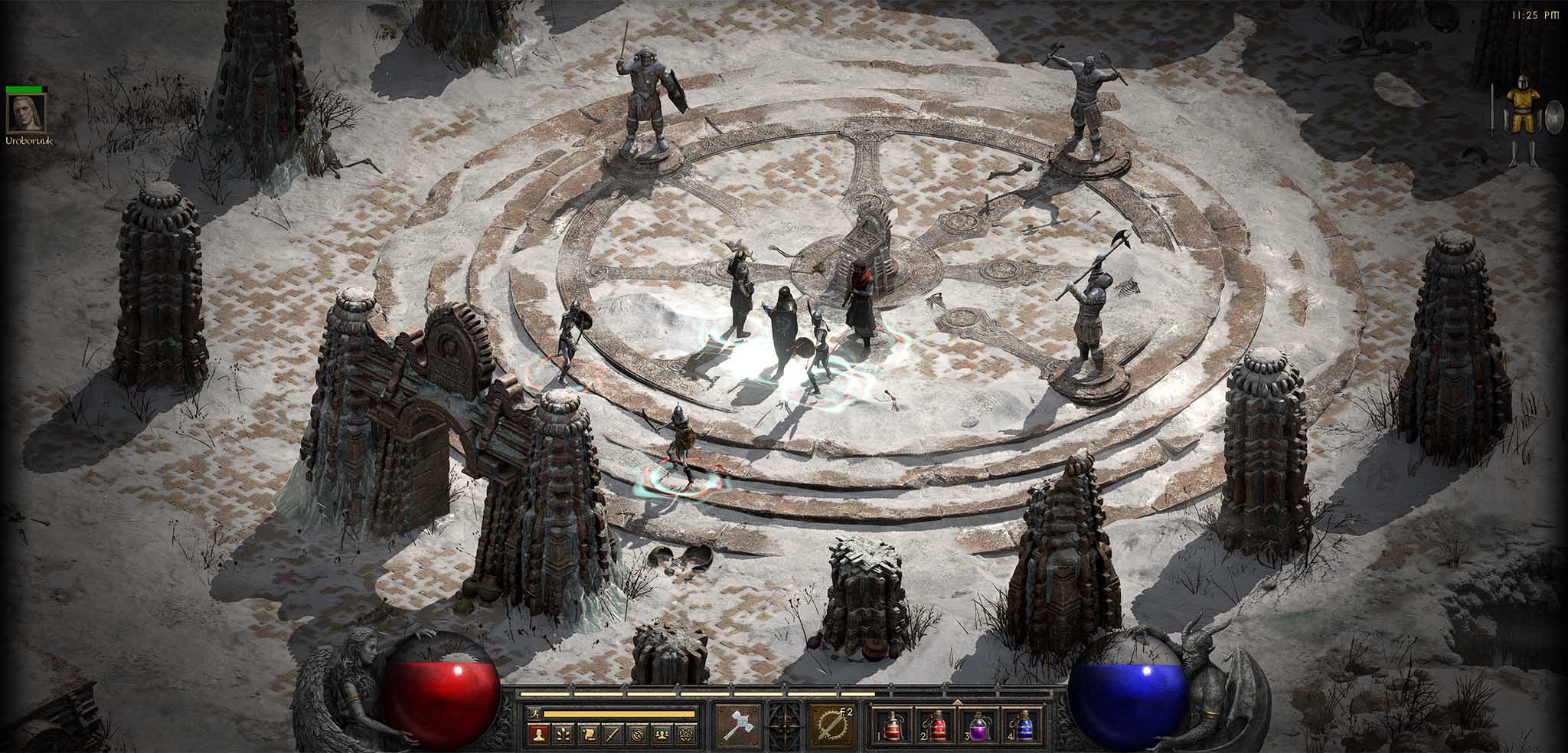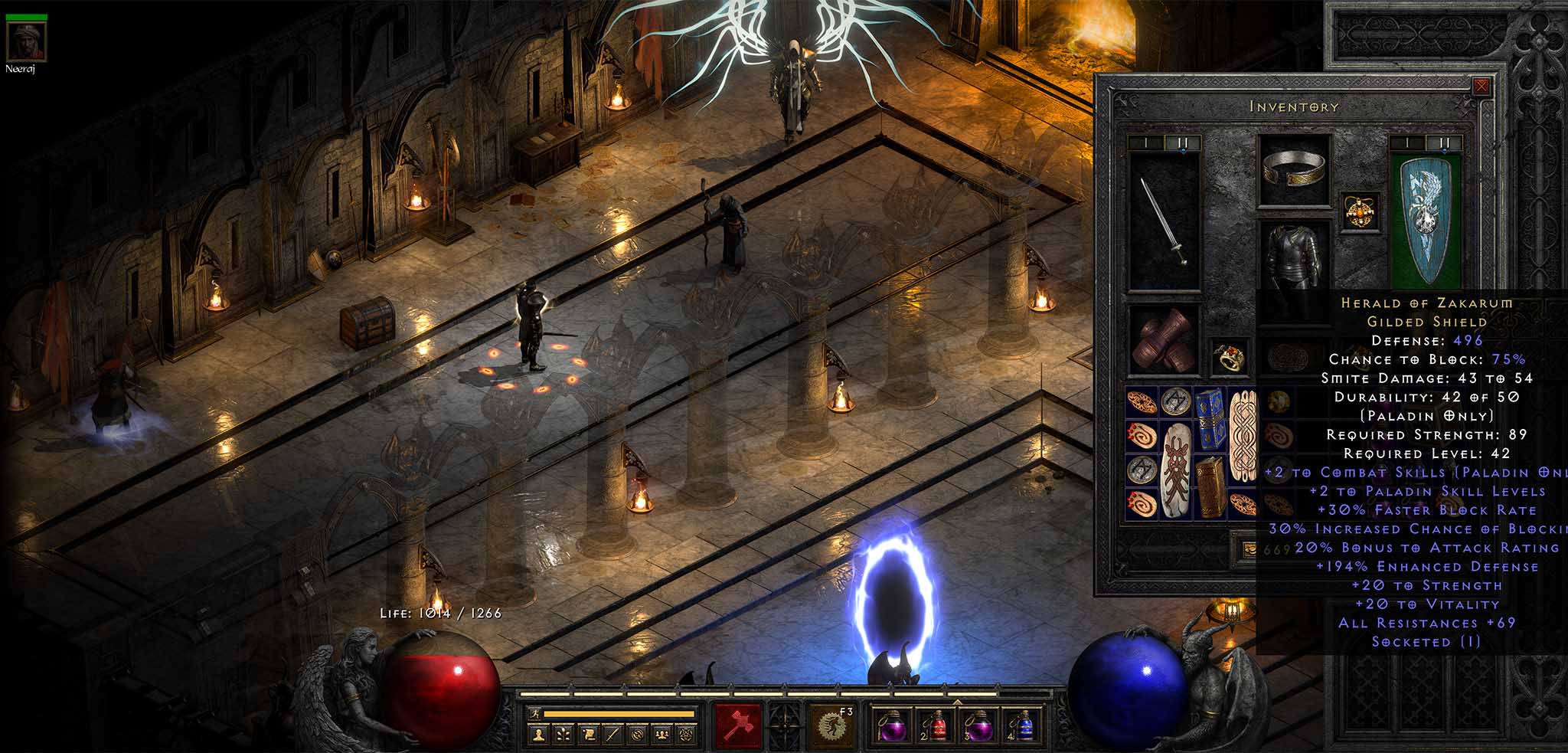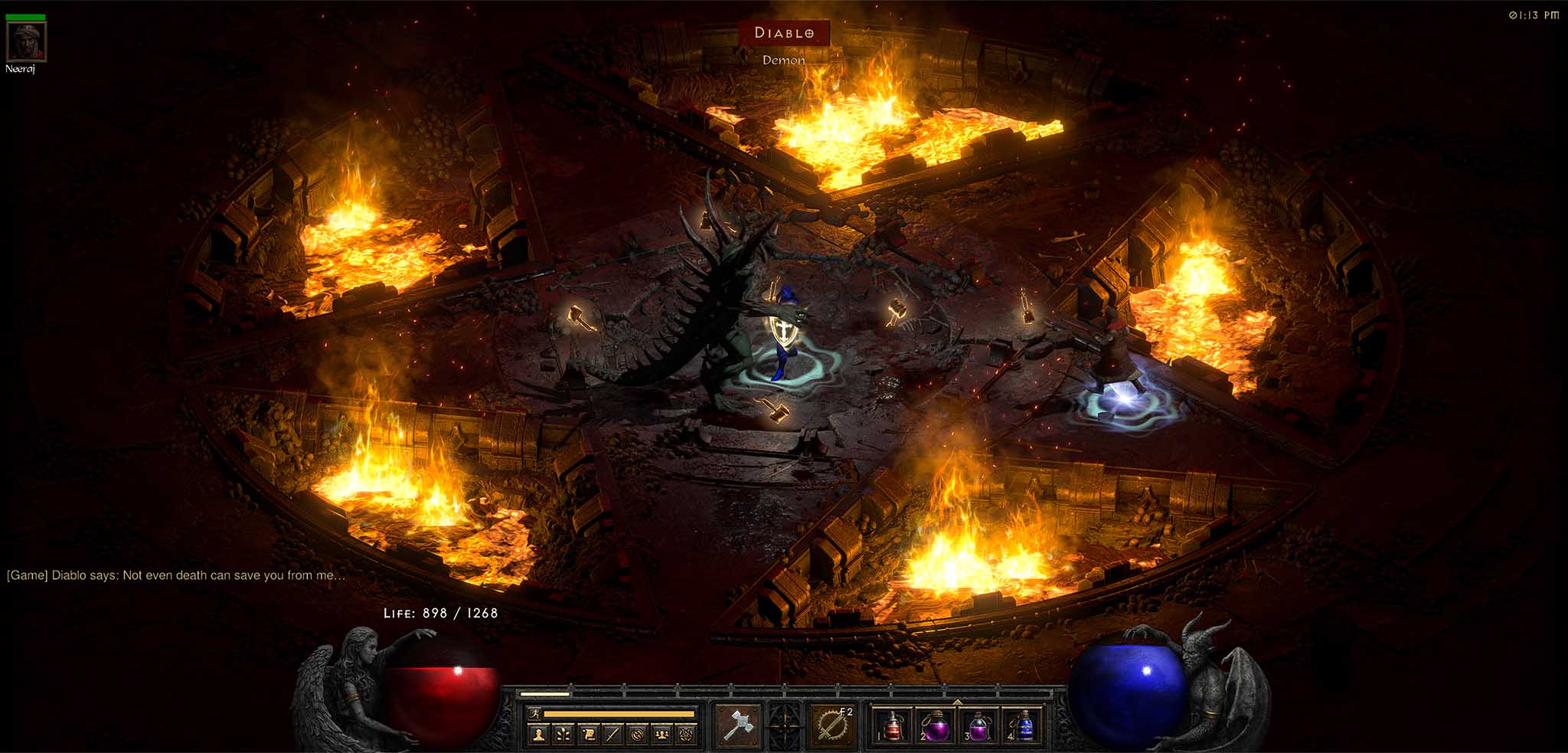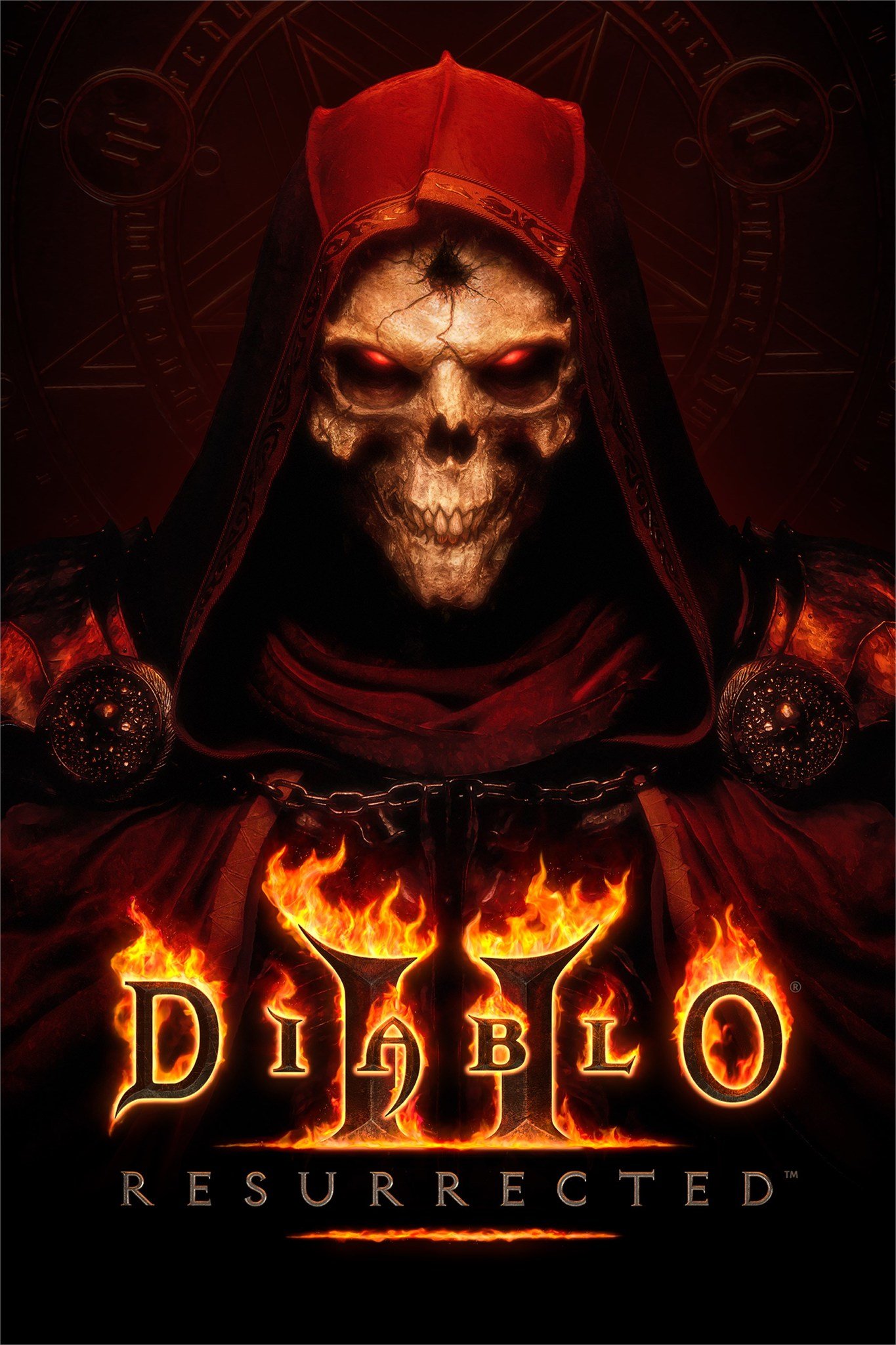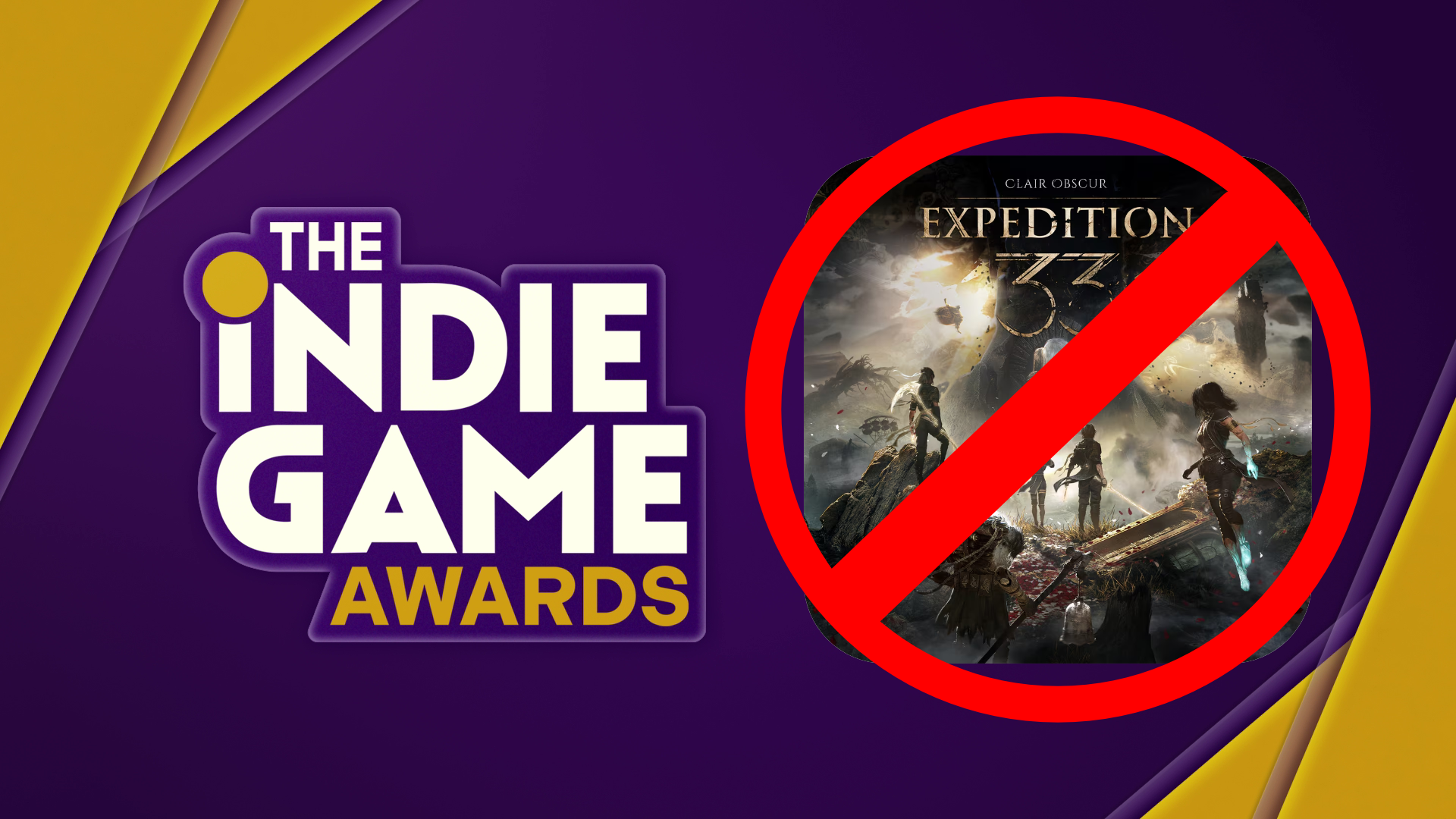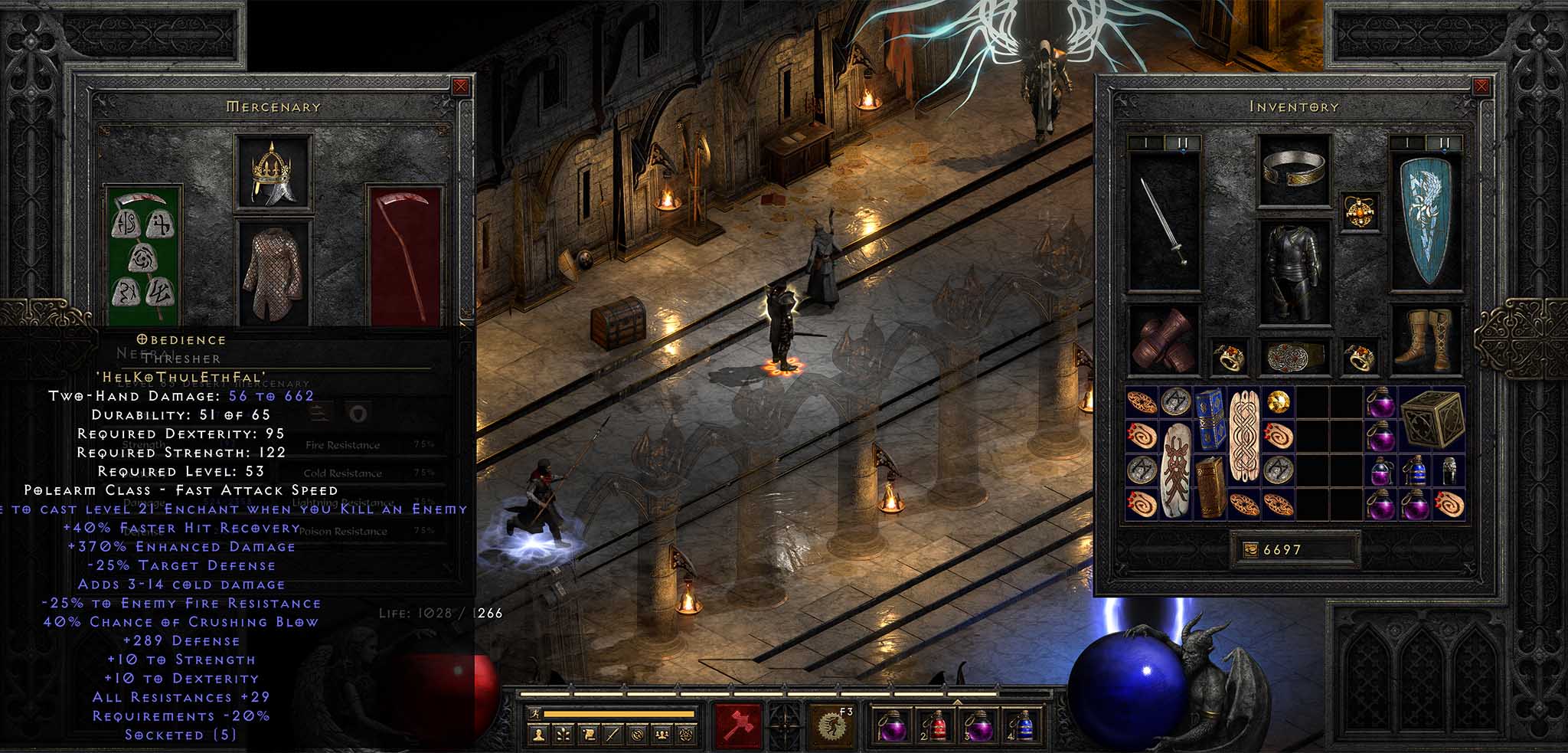
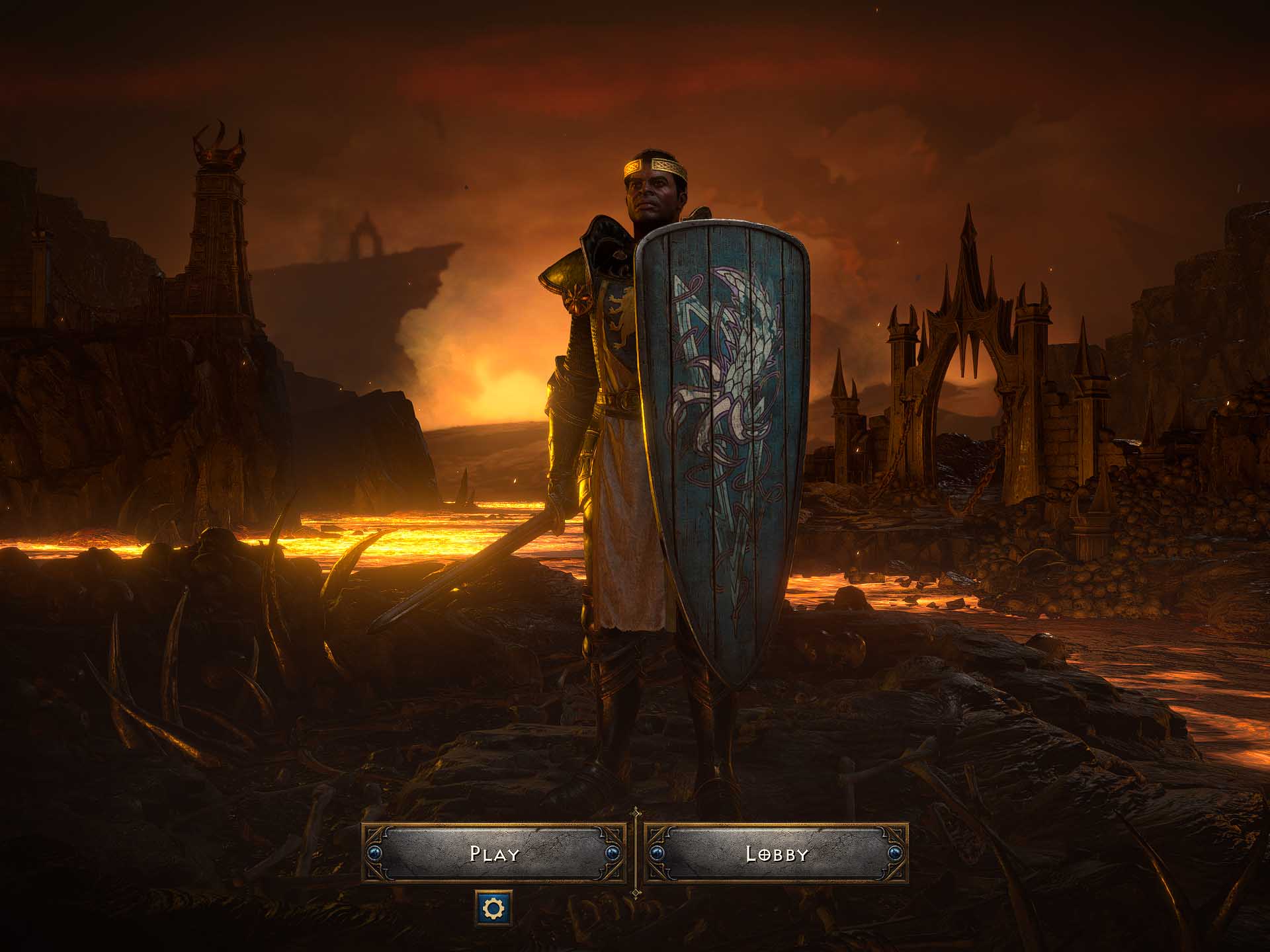
Diablo 2: Resurrected is here, and many players — new and old — are experiencing the steep difficulty spike when combining skill choices, attributes, and gear. The Paladin is a favorite of many people thanks to his powerful auras, blocking ability, and high damage output, but it can be easy to spread your stats and skills too thin and end up with a build that can't handle Hell difficulty. I've put together this guide for a "Hammerdin" that will take you from Act 1 in Normal difficulty all the way to Act 5 in Hell difficulty without much issue.
Early game and respec'ing your Paladin in Diablo 2: Resurrected
The Paladin is a great starting character, especially if you're playing in a party. I would place him second to the Sorceress, for which I've also written a beginner build guide. All allied players and their minions can take advantage of a Paladin's active aura, which can boost damage or survivability. I'm focusing on the Hammerdin build in this guide, but the required skills don't come until later in the game. For best effect at the very start of the game, the Zeal skill will be used in tandem with the Holy Fire aura.
Don't worry about wasting skill points on skills you won't use once you switch to Blessed Hammer (which gives the Hammerdin his name). Diablo 2: Resurrected gives one free "respec" in each difficulty when you complete the Den of Evil quest in Act 1. This move resets your spent attribute and skill points for reuse. You can save your respecs, even when advancing to the next difficulty level, giving you some flexibility in what skills and attributes you choose in the early game. These free respecs are valuable, and you should only use them when absolutely necessary.
The first 18 levels your Paladin sees will look something like this:
- Level 2: Might
- Level 3: Sacrifice
- Level 4-5: Resist Fire
- Level 6-10: Holy Fire
- Level 11: Smite
- Level 12: Zeal
- Level 13: Charge
- Level 14-18: Holy Fire
You will also receive some skill points from quests along the way. Focus these into Resist Fire or Holy Fire to increase your damage.
Once you hit level 19, it's time to begin focusing your skill points into Blessed Hammer (main attack), Concentration (aura), Vigor (synergy), and Blessed Aim (synergy). These four skills are crucial for boosting a Hammerdin's damage.
Continue using Zeal with Holy Fire as you level up the Hammerdin skills, at least until Blessed Hammer starts doing more damage. Focus on maxing out Blessed Hammer with Concentration not far behind, then alternate Vigor and Blessed Aim. You might want to sink a few extra points into Vigor early on to help with run speeds. Be sure to add a point to Holy Shield to boost your defense and block chance.
All the latest news, reviews, and guides for Windows and Xbox diehards.
You don't necessarily need to use a respec once Blessed Hammer becomes available, but if you find that you aren't doing enough damage it might be required.
Key stats for your Paladin in Diablo 2: Resurrected
There are a ton of terms and stats in Diablo 2: Resurrected, but as a Paladin some are far more important than others. Faster Cast Rate (FCR), Faster Hit Recovery (FHR), Resistances, Vitality, Dexterity, and Faster Run/Walk are all keys to a strong build.
Vitality
More points into Vitality is always better for a Paladin, as it adds to your life pool. Add as much as possible while still having enough Strength and Dexterity to wear your gear.
Dexterity
The Paladin's Holy Shield skill adds chance to block, making it easier to reach max block (75%). If you'd like to hit max block, you will still need to add points into Dexterity. Cast Holy Shield with your preferred shield equipped, then open the character window and hover your cursor over your defense rating to see your chance to block percentage. Get this up to 75% for best results.
Faster Cast Rate and Faster Hit Recovery
Faster Cast Rate (FCR) determines how quickly your Hammerdin can get his hammers summoned. The more hammers spinning around, the more damage he's going to do. Diablo 2: Resurrected plays a little trick here that involves "breakpoints." You must hit a certain percentage of FCR in order to actually see a change due to how many frames it takes to display the animation. Here are the breakpoints for the Paladin.
| Frames | FCR |
|---|---|
| 15 | 0% |
| 14 | 9% |
| 13 | 18% |
| 12 | 30% |
| 11 | 48% |
| 10 | 75% |
| 9 | 125% |
The 75% breakpoint is definitely the minimum for the Paladin. Shoot for that and stretch for 125% as gear allows. Note that FCR only comes from equipped gear.
Faster Hit Recovery (FHR) — how quickly you can go in and out of hit recovery mode when struck — works the same way as FCR in terms of breakpoints. You get FHR from gear, and it's crucial to surviving in Hell difficulty. Here are the Paladin's FHR breakpoints.
| Frames | FHR |
|---|---|
| 9 | 0% |
| 8 | 7% |
| 7 | 15% |
| 6 | 27% |
| 5 | 48% |
| 4 | 86% |
| 3 | 200% |
| 2 | 4,680% |
Hitting 200% will be difficult until you reach the endgame, so shoot for 86% here. Look out for Grand Charms with 12% FHR to keep in your inventory.
Faster Run/Walk
Since the Paladin doesn't have natural access to the Teleport skill like the Sorceress, he relies on his feet to get around. The Charge skill and Vigor aura can help speed things up, but adding Faster Run/Walk via gear and charms will go a long way. The more the better here.
Diablo 2: Resurrected Hammerdin skills
The Hammerdin is an extremely powerful build due to its reliance on Magic damage from the Blessed Hammer skill. There are few monsters in the game with resistances to Magic damage, allowing you to breeze through many areas without the assistance of other players or hirelings.
Once you decide to respec — or if you get rushed through to Hell and power-leveled — you will have a glut of skills points to sink into your skill trees. Here's a breakdown of the skills you want to use.
| Defensive Auras | Points |
|---|---|
| Prayer | 1 |
| Cleansing | 1 |
| Defiance | 1+ |
| Vigor | 20 |
| Redemption | 1 |
Redemption is an invaluable skill that lets you absorb dead enemies for life and mana. If you're a solo player, switching to Redemption after killing a pack of monsters will keep both pools almost perpetually filled.
| Offensive Auras | Points |
|---|---|
| Might | 1 |
| Blessed Aim | 20 |
| Concentration | 20 |
| Fanaticism | 1 |
Concentration should be your main aura when casting Blessed Hammer. Blessed Aim adds a ton of damage to your hammers. The one point into Fanaticism is optional, but if you plan on using your Paladin to complete the Pandemonium Event you will want to use it with your Smite skill.
| Combat Skills | Points |
|---|---|
| Smite | 1 |
| Holy Bolt | 1 |
| Charge | 1 |
| Blessed Hammer | 20 |
| Holy Shield | 1+ |
Leftover points can go into Holy Shield, but be sure to get at least one in there as soon as possible.
Best Paladin gear for Hammerdin build
Your Paladin will go through gear quickly at the start of the game as you find new stuff. Don't worry about that; just use whatever fits best for the time being. Watch out for gear that boosts resistances, FCR, FHR, Vitality, Life, and Run/Walk. Anything with relevant +Skills is also recommended.
Early runewords for your Paladin
Runes and runewords are powerful items that can give a new character a big boost. Try repeatedly running the Countess in Act 1 to find many of these runes.
- Stealth (Tal + Eth) — This is made into a two-socket body armor and will add FCR, FHR, mana and regeneration, faster run/walk, poison resistance, and more. Check Charsi's shop for a two-socket armor to use here.
- Lore (Ort + Sol) — This is made into a two-socket helm. The runes are a bit less common than the previous two runewords, but this is still a great item that can even help you through Nightmare. It boosts all your skills by one, adds lightning resistance, energy, and more.
- Spirit (Tal + Thul + Ort + Amn) — Spirit is one of the most popular and powerful runewords in the game. It can be made into either a four-socket sword or a shield (with a few differing stats depending), granting an extra two to all skills, FCR, FHR, vitality, mana, and a ton of resistances (for the shield). This will take some time to put together, but a Paladin with a Spirit in each hand is a force to be reckoned with. Be sure to find a Paladin shield that grants natural resistances for an extra buff.
- Insight (Ral + Tir + Tal + Sol) — This is made into a four-socket stave or polearm and is generally handed off to a hired mercenary from Act 2. The real treat here is a Meditation aura that gives all party members quick mana regeneration. With this in your party, you should find that you're sipping on far fewer mana potions.
- Ancient's Pledge (Ral + Ort + Tal) — If you're struggling with resistances, making this runeword in a Paladin shield will help a lot. These three runes are awarded for completing the second quest in Act 5.
Mid- and end-game gear for your Paladin
Diablo 2: Resurrected is a gear-driven game, with so many different pieces that you'll spend a lot of time trying to figure out just what to wear. While everyone's wardrobe will look different at the start of the game, end-game gear is usually similar across Hammerdin builds.
- Harlequin Crest shako helm. Generally just called Shako. This item is one of the most powerful in the game. +Skills, MF, and more.
- Skin of the Vipermagi body armor. Lots of FCR, +Skills, resistances. Great if you're trying to hit an FCR breakpoint.
- Enigma (Jah + Ith + Ber) armor runeword. This grants the Paladin +1 to the Teleport skill, plus a whole bunch of other great mods. This is best-in-slot, but it is very expensive.
- Chance Guard or Magefist gloves. The former adds MF while the latter adds FCR and a bump to your fire skills.
- String of Ears or Arachnid Mesh belt. The former belt is a solid stand-in, while the latter belt is one of the best items in the game.
- War Traveler's or Aldur's Advance or Sandstorm Treks boots. These are all solid options for the Paladin. War Traveler's give you MF, while the latter two are more for survivability.
- Herald of Zakarum gilded shield. +2 to Paladin skills, +2 to Combat Skills, faster block rate and increased block chance, +50 to all resistances. This is the shield if you don't need FCR from a Spirit runeword.
- Heart of the Oak (Ko + Vex + Pul + Thul) runeword flail. +3 to skills, FCR, and a ton of resistances. This is best-in-slot for a Hammerdin weapon.
If you'd like to buff your Paladin before going out into battle, the Call to Arms runeword (Amn + Ral + Mal + Ist + Ohm) built into a crystal sword or flail is key. It's expensive, but it grants you access to Barbarian buff skills.
For charms in your inventory, look out for resistances, FHR, life, mana, and MF. Gheed's Fortune unique grand charm will boost MF. The Annihilus small charm (often called Anni) and Hellfire Torch are both end-game items that will take a lot of work to gain but will boost your stats considerably.
As for rings, you can check out the Nagelring for magic find, or any rare FCR ring with resistances and strength. Stone of Jordan is best-in-slot for a ring, and Mara's Kaleidoscope is best as an amulet.
Best mercenary setup for your Paladin
A Paladin with even mid-game gear is perfectly capable of soloing Hell difficulty, but a mercenary's help is always appreciated. An Act 2 mercenary hired from Greiz works best for the Paladin; I recommend the Defensive mercenary hired from Nightmare difficulty. This mercenary has the Holy Freeze aura active at all times, which slows down nearby enemies.
The Act 2 Defensive mercenary from Normal or Hell difficulty can also be good thanks to his Defiance aura. This grants you a ton more defense but doesn't provide any crowd control.
If you're not using the Redemption aura to refill your mana pool (or you seem to always be out of mana), the Insight runeword (Ral + Tir + Tal + Sol) in a polearm will give you the Meditation aura. If you have enough mana and just want pure damage output, the Obedience runeword (Hel + Ko + Thul + Eth + Fal) in a polearm is a strong alternative that isn't terribly expensive.
The Treachery runeword (Shael + Thul + Lem) can be built into a three-socket body armor for rather cheap. It adds increased attack speed (IAS), cold resist, and a chance to cast the Fade skill which reduces damage dealt to the merc and raises his resistances. Later you can move into other armors, like an Ethereal Shaftstop or the Fortitude runeword.
Finally, the helms you should look out for are Guillaume's Face, Vampire Gaze, or Andariel's Visage. In the meantime, look for anything that boosts damage, resistances, or life steal.
Where to magic find with your Paladin
The Paladin's end-game gear isn't terribly generous with magic find stats, but you can tune accordingly with rare gear or other uniques.
A Hammerdin excels at clearing the Chaos Sanctuary and the River of Flame approach, two areas where any item in the game can drop. Clear all three seal bosses then melt Diablo himself with your hammers.
I also enjoy running The Pit in Act 1's Tamoe Highlands; just watch out for champion packs of archers. Pindleskin, Shenk the Overseer, and Eldritch the Rectifier are other unique bosses that don't require much effort to reach, important for a character without natural Teleport.
If you're still looking for a bit more knowledge, be sure to have a look at our Diablo 2: Resurrected beginner tips and tricks guide. And if you're having issues running the remade game on a PC that used to run the original game 20 years ago, check out our picks for the best laptops for playing Diablo 2: Resurrected.

Cale Hunt brings to Windows Central more than nine years of experience writing about laptops, PCs, accessories, games, and beyond. If it runs Windows or in some way complements the hardware, there’s a good chance he knows about it, has written about it, or is already busy testing it.
